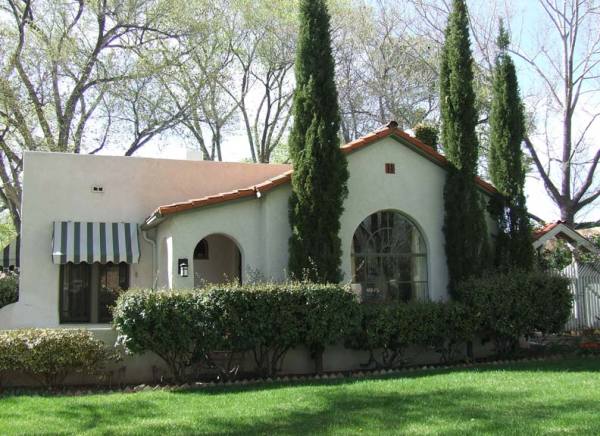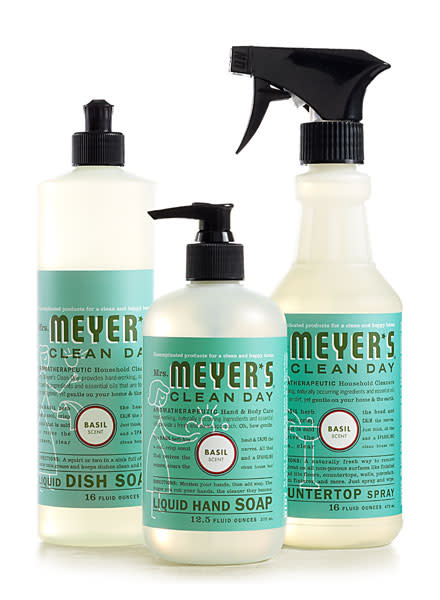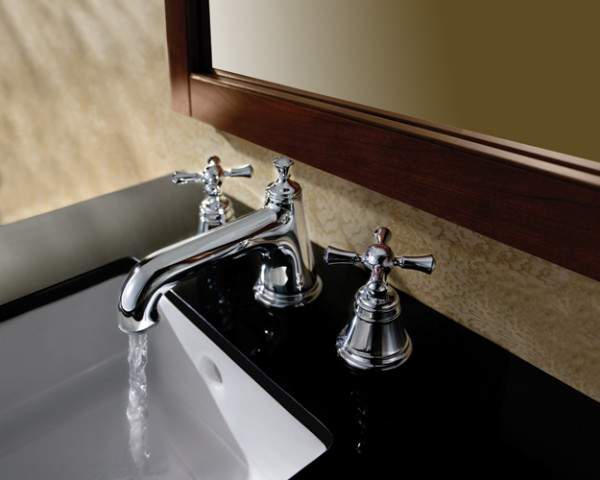
Shady landscaping and awnings can help reduce solar gain and cut air-conditining bills.
Going green in an old house can be a bit of a challenge—it’s a delicate balance between new technology and historic features. Then there’s the fact that many green technologies require a substantial up-front investment. All in all, it can seem a daunting prospect. But greening your house doesn’t have to involve an entire retrofit. These 7 tips are simple to execute—and they’ll get you plenty of green bang for very few bucks.
1. Switch to CFLs
Compact fluorescent lightbulbs (CFLs) are one of the easiest ways to make a green impact—they burn just as brightly as regular incandescent bulbs while using a fraction of the energy. As technology has developed, CFLs have started to mimic the warm glow of incandescents more convincingly (bulbs with a temperature range of 2700-3000K will give off yellowish light), making it possible to get that trademark old-house warmth in an eco-friendly package.

Natural cleaning lines—like Mrs. Meyer’s—will keep your kitchen spic & span without the harmful chemicals. (And they smell better, too!)
2. Tune up windows
Original windows are often vilified as the primary source of energy leakage in old houses, but making them more efficient is fairly easy with some well-deployed weatherstripping. (See this article for tips on installing weatherstripping and other DIY tuneups.) If weatherstripping windows is a bigger project than you want to tackle, consider installing storm windows to block drafts.
3. Clean green
You’ve probably noticed natural cleaning products taking up more shelf space lately in your local grocery store—brands like Seventh Generation, Method, and Mrs. Meyer’s have gone mainstream, promising squeaky-clean surfaces without harsh chemicals. (Even Clorox has gotten in on the action with its Green Works line.) Don’t want to shell out the bucks for natural cleaning products? Household items like vinegar and baking soda can work as cleaning agents, too.
4. Transform your toilet
The newest toilets on the market use just 1.6 gallons of water per flush—a huge savings over toilets of the 1950s and earlier, which consumed a whopping 7 gallons per flush. But if you’ve got a great vintage commode in your period bathroom, there’s no need to sacrifice style in the name of eco-friendliness. Retrofitting the tank with an early closure flapper will shut off the water before it fills the entire tank, saving up to 50 percent per flush.

New faucets—like the Hatteras from American Standard’s JADO line—often come with built-in aerators to control water consumption, but it’s easy to retrofit an old faucet, too.
5. Air out your faucet
By the same token, there’s no need to invest in fancy new low-flow faucets (many of which are probably too sleek for period kitchens and baths anyway). An aerator, screwed onto the end of an existing faucet, will help reduce water flow (to as little as 0.5 gallons per minute) while keeping pressure up by mixing air into the water stream.
6. Help your hot water heater
If you’re not ready to trade out your old hot-water heater for a new tankless model, there are still steps you can take to make it more efficient. Start by checking the thermostat—a maximum temperature of 120 degrees should be enough to get you by comfortably. You can also insulate an electric hot-water tank with a pre-cut jacket or blanket (be careful not to cover the thermostat), which mitigate heat loss by 25 to 45 percent. (Note: Insulating gas-fueled hot-water tanks is trickier; you may want to get a professional to do this.)
7. Get some shade
Minimizing solar heat gain is key to giving your air conditioning a break in the summer. On sunny eastern and southern exposures, you can use blinds, curtains, or awnings to block the sun and keep your house cool. For an even more eco-friendly fix, consider planting a deciduous tree outside a sunny window, which will shade it in the summer but let light (and heat) through in the winter.







